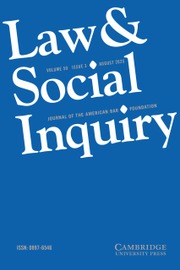No CrossRef data available.
Article contents
Human Rights in Japanese Prisons: Reconsidering Segregation as a Disciplinary Measure
Published online by Cambridge University Press: 21 November 2024
Abstract
This article discusses the legitimacy of solitary confinement in prisons in Japan, which is still used despite the spread of modern international human rights norms in the twentieth century. The article examines the disciplinary measures provided for in the Act on Penal Detention Facilities and the Treatment of Inmates and Detainees (2006), which is a revision of the Prison Law (1908), and argues that although the legal revisions appear to have been made, the discretionary power of prison wardens remains unrestrained, wardens retain decision-making power for disciplinary measures. The article then critiques this approach on two grounds: first, there is an overuse of solitary confinement (over 85%) among other means of disciplinary measures; and, second, this violates both the spirit and the provisions of the Mandela Rules. International standards are based on the idea of human dignity with the established principle that solitary confinement should be imposed only as a last resort. The article ends with practical suggestions to make a more serious move forward to comply with international standards.
- Type
- Articles
- Information
- Copyright
- © The Author(s), 2024. Published by Cambridge University Press on behalf of American Bar Foundation


